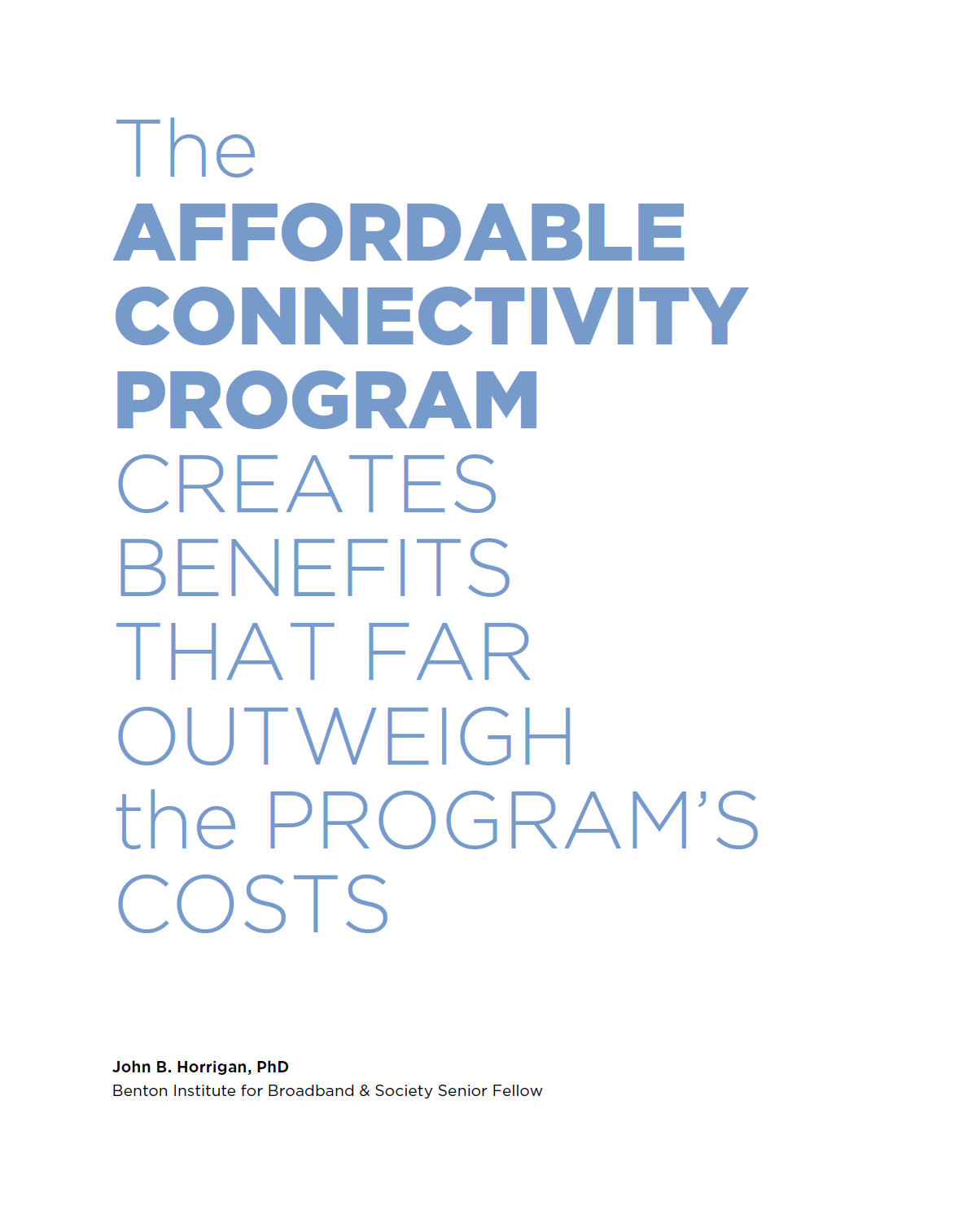The Affordable Connectivity Program Creates $16.2 Billion in Annual Benefits to Subscribers
Friday, March 15, 2024
Digital Beat
The Affordable Connectivity Program Creates $16.2 Billion in Annual Benefits to Subscribers
New analysis finds benefits of consistent internet access far outweigh ACP’s costs by nearly 2 to 1

Created by Congress in 2020 and renewed in 2021, the Affordable Connectivity Program (ACP) is helping 23.3 million households afford internet access. But funding for ACP—the largest, most successful internet affordability program in U.S. history—is set to expire on May 30, 2024. This week, President Joe Biden proposed short- and long-term funding solutions in his budget. And a House bill to provide funding through the end of 2024 had 180 cosponsors in the House of Representatives.
For anyone who may question the investment in affordable broadband, I’ve just completed an analysis of existing research that demonstrates that ACP creates $16.2 billion in annual benefits to users of the service subsidy, nearly twice the $8.4 billion it costs for the $30 monthly subsidy (which increases to $75 per month in Tribal lands and high-cost areas). In other words, every $1 of ACP service subsidy results in close to $2 in benefits.
The upshot is clear: ACP can have positive impacts on beneficiaries’ lives – benefits that are much greater than the program’s costs. As policymakers consider the ACP’s future, they should do so knowing that the program’s costs have positive and substantial payoffs.
How I Arrived at These Numbers
The proposition that high-speed internet connectivity is beneficial is, on its face, not controversial. For years, elected officials, advocates, and business leaders have touted the rewards that broadband can create for local economies, health care delivery, and more. A number of research studies bear this out, showing that investments in broadband infrastructure and growth in broadband adoption among consumers each have economic payoffs.
Looking at the specific impacts from broadband programs is a different matter. Relatively few studies have looked at results from broadband initiatives, and those tend to focus on the Comcast Internet Essentials (IE) program. A 2019 study by Rosston and Wallsten showed that broadband adoption in areas served by Comcast was higher than it otherwise would be (i.e., one could attribute observed increases in low-income broadband adoption in areas where the IE offer was available to the presence of the IE discount). Zuo (2021) traced the IE offer to increases in household income, finding a positive relationship between broadband adoption increases brought about by IE and the likelihood of being employed (and thus experiencing income growth).
In my analysis, I build on some of this research in an examination of the ACP. The analysis leverages the research of Zuo and Dolfen, whose separate research found positive economic impacts to having internet access from employment effects and using ecommerce to shop.1 The “special sauce” in my analysis is a careful parsing of the population of ACP subscribers to assess impacts. Specifically:
- How many are new to broadband because of ACP?
- How many are more consistent subscribers because the program has prevented lapses in service subscription that are a fact of life for many low-income households?
- And how should we think about benefits for these different groups?
The $16.2 billion in benefits for ACP households the analysis finds only touch on a portion of the potential upsides. A household with new or consistent broadband service has the opportunity to use telehealth applications. Telehealth can save service providers money in avoided office visits and patients the time and costs of traveling to appointments. These benefits can be substantial – but they are not captured in our analysis.
ACP is an indispensable part of the universal service policy toolkit. It furthers universal service values of connectivity and inclusiveness, and is doing so at a time in our nation’s history when communications services shape how citizens cope with social and economic change. Analysis of ACP’s impact thus far shows that this investment in connectivity is paying off handsomely.
- Dolfen, Paul, Liran Einav, Peter J. Klenow, Benjamin Klopack, Jonathan D. Levin, Larry Levin, and Wayne Best. 2023. "Assessing the Gains from E-Commerce." American Economic Journal: Macroeconomics, 15 (1): 342-70.
For more, see The Affordable Connectivity Program Creates Benefits that Far Outweigh the Program's Costs
John B. Horrigan is a Benton Senior Fellow and a national expert on technology adoption, digital inclusion, and evaluating the outcomes and impacts of programs designed to promote communications technology adoption and use.
The Benton Institute for Broadband & Society is a non-profit organization dedicated to ensuring that all people in the U.S. have access to competitive, High-Performance Broadband regardless of where they live or who they are. We believe communication policy - rooted in the values of access, equity, and diversity - has the power to deliver new opportunities and strengthen communities.
© Benton Institute for Broadband & Society 2023. Redistribution of this email publication - both internally and externally - is encouraged if it includes this copyright statement.
For subscribe/unsubscribe info, please email headlinesATbentonDOTorg






